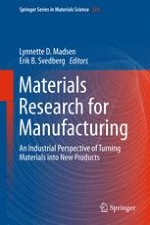2016 | OriginalPaper | Buchkapitel
9. American Process: Production of Low Cost Nanocellulose for Renewable, Advanced Materials Applications
verfasst von : Kim Nelson, Theodora Retsina, Mikhail Iakovlev, Adriaan van Heiningen, Yulin Deng, Jo Anne Shatkin, Arie Mulyadi
Erschienen in: Materials Research for Manufacturing
Aktivieren Sie unsere intelligente Suche, um passende Fachinhalte oder Patente zu finden.
Wählen Sie Textabschnitte aus um mit Künstlicher Intelligenz passenden Patente zu finden. powered by
Markieren Sie Textabschnitte, um KI-gestützt weitere passende Inhalte zu finden. powered by
